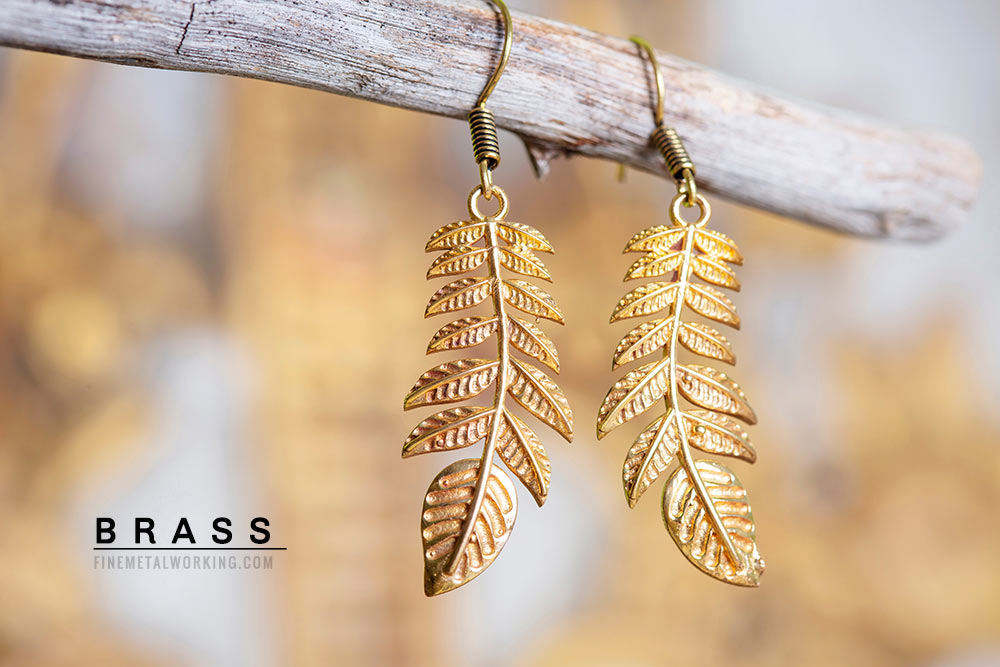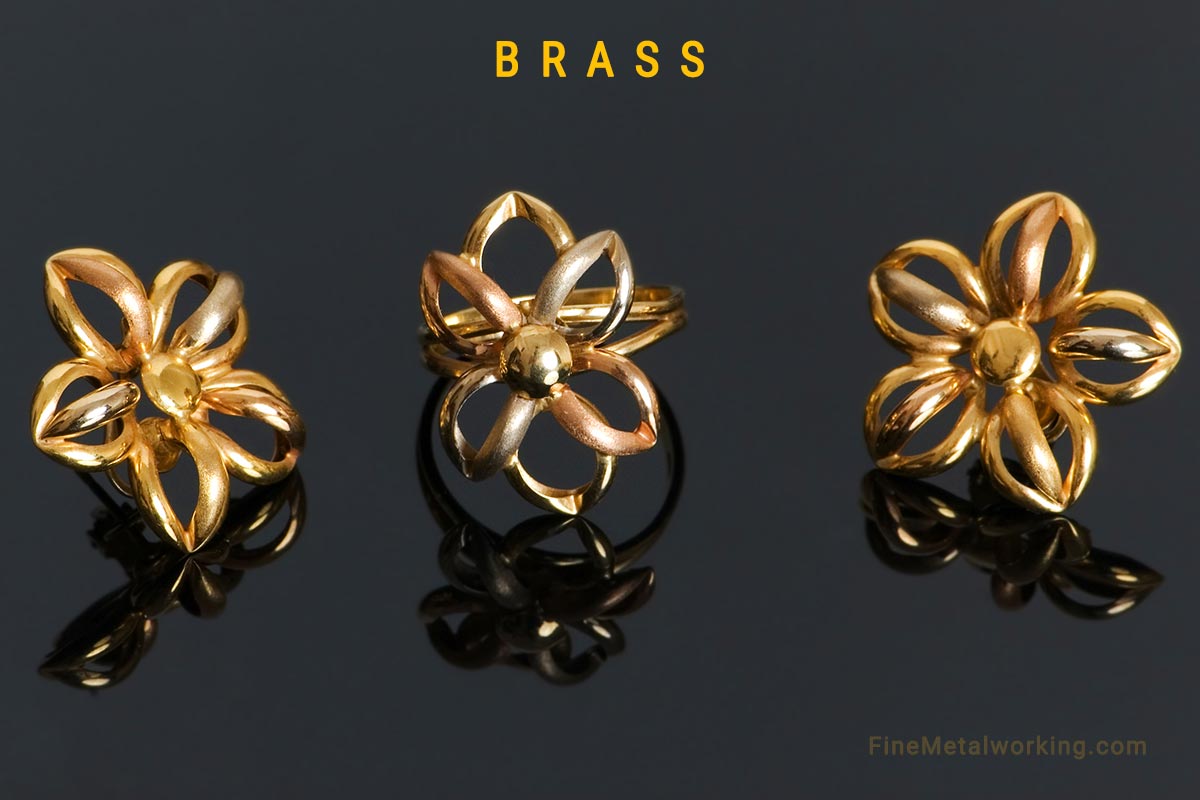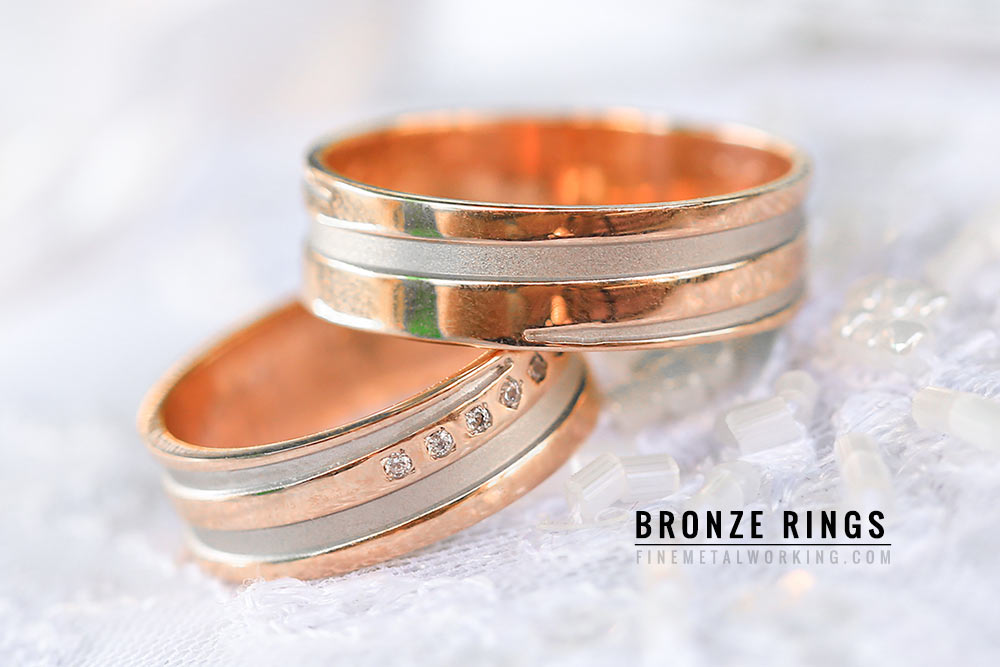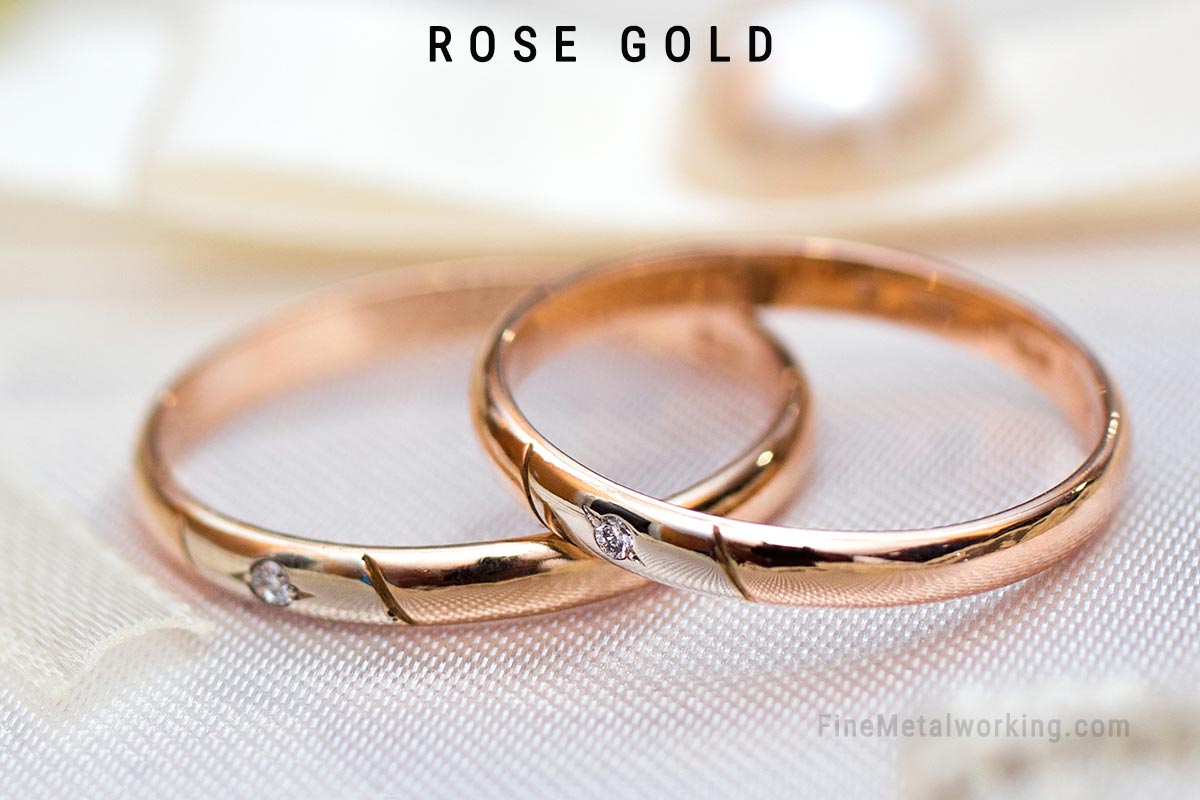Gold jewelry is alluring, proffering the image of luxury and quality. However, various metals appear gold but aren’t. Which are they, and why would you use them?
Page Contents
List of Gold Like Metals
Before delving into gold alternatives, we should know why gold is so sought-after.
For starters, it’s a pure metal, mined as such, and quite rare. It’s also non-allergic, so anyone could wear it in its pure form. That’s why it’s so expensive.
It doesn’t tarnish, either, so if you don’t damage your cold jewelry through dents and scratches, it will always look pristine. There’s the catch, though. Gold is soft and easily damaged, so pure gold isn’t suitable for jewelry that is worn regularly, such as wedding rings. That’s why even traditional yellow gold is alloyed with silver and zinc to improve its strength and durability.
You have seen metals that are black used for making elegant jewelry. It’s time to see golden metals. When dealing with gold-like metals, you should know each option’s properties, pros, and cons. They vary in color, durability, cost, and a few other factors. Some are likely to stain our skin, while others won’t. We delve into this next.
1. Brass
Brass is a yellowish alloy of zinc and copper, usually at a ratio of 33:67, although this may vary slightly. Increasing the copper content will make the alloy appear more yellow while increasing the zinc content makes it appear more white.
This alloy is inexpensive and usually used to make costume jewelry. When exposed to air, bacteria, and minerals, brass stains over time and frequent wear could stain your skin green. This green stain is nothing to worry about and will fade quickly. Unless you’re allergic to one of the alloying elements, in which case you should stay away.
2. Bronze
Bronze is an alloy of 12% tin and 88% copper. It could contain other metals as well. This brittle alloy has a warm, slightly brown tone that could look like gold when polished. Unfortunately, since bronze is so brittle, it can’t be formed from sheets or wire, as is often the case with pure gold.
Jewelers should note that bronze slightly expands when it melts, similar to water. This makes for exciting casting techniques since the expansion must be accounted for.
3. Pinchbeck
Pinchbeck, named after its inventor, Christopher Pinchbeck, is an alloy of 83% copper and 17% zinc, used to imitate gold. It’s far cheaper than gold and is famously used in stage jewelry.
The inventor, an 18th-century watchmaker, distinguished these imitation pieces from real gold with a marking, but later copycats didn’t do this. Instead, they flooded the market with pieces made from Pinchbeck, passing them off as real gold. This gave the alloy a lousy name, decreasing its popularity.
Pinchbeck is also used to make bathroom accessories such as shower faucets.
4. Rose Gold
Rose gold is an alloy of gold (75%), copper (25%), and silver. Here, the inclusion of copper offers the characteristic warm pinkish-red tone. Adding silver to the alloy tones down the red hue, making the metal appear lighter and more pink rather than red. While rose gold doesn’t tarnish, it needs regular cleaning and polishing to remain in mint condition.
It’s more durable than the purer yellow gold, too, due to the high copper content. Suppose you’re allergic to copper, though. In that case, you won’t be able to wear rose gold jewelry, and it is also not as readily available as yellow gold or even white gold.
5. Gold Filled
Gold-filled jewelry is made of various layers. Here, the piece’s core is an inexpensive metal, usually brass, although silver could also be used. This core is then clad in gold sheet, giving the piece the appearance of solid gold. For this, you have two options: single clad or double clad. Single clad pieces have a gold layer on only one side of the piece – the side visible to the wearer. Double clad pieces have two gold layers, one on the outside and one on the inside.
These cladding layers are made from raw gold, sold as sheets or wire, bonded to the brass core by applying heat and pressure.
Legally, gold-filled pieces contain 5% gold alloy by weight. This alloy could vary in purity and must be specified in the design. Usually, 12kt or 14kt gold is used for this, and the markings are abbreviated as 12/24 GF or 14/24 GF.
6. Rolled Gold
Rolled gold, often confused with gold-filled pieces, is generally used in watchmaking. A brass core is covered with thin gold sheets, making up 2.5% of the final object by weight. The gold sheet is fused to the brass core through heat and pressure application as with filled gold.
7. Gold Plated
Gold plating is similar to the gold filling and rolled gold, although the gold content in the final object is even less at 0.05% by weight. Here, an extremely thin layer of gold is applied to a piece made from a base metal, such as brass.
While gold plated objects are far cheaper than the solid gold alternatives, it isn’t very durable. Since the golden outside layer is so thin, it is easily scratched and damaged and usually wears off. So, if you’re looking for a piece that will stand the test of time, gold plated is probably not the right option.
Why Use Gold-Like Metals Instead of Pure Gold?
Pure gold, rated at 24 karats, is costly. It is also very soft. So soft that you can bend and shape it with your hands.
Jewelry made from pure gold won’t last long since it’s so easily damaged. By alloying gold with other metals or by coating other metals with a layer of gold, you improve the final product’s durability, and you lower the cost. It’s a win-win.







